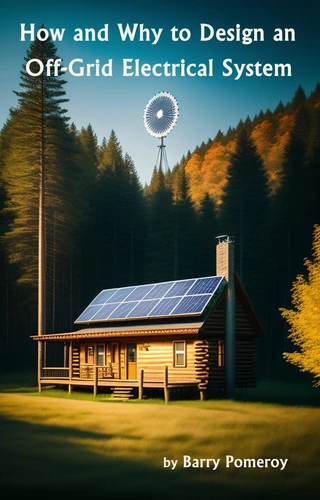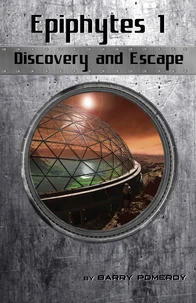How and Why to Design an Off-Grid Electrical System
Par :Formats :
Disponible dans votre compte client Decitre ou Furet du Nord dès validation de votre commande. Le format ePub est :
- Compatible avec une lecture sur My Vivlio (smartphone, tablette, ordinateur)
- Compatible avec une lecture sur liseuses Vivlio
- Pour les liseuses autres que Vivlio, vous devez utiliser le logiciel Adobe Digital Edition. Non compatible avec la lecture sur les liseuses Kindle, Remarkable et Sony
 , qui est-ce ?
, qui est-ce ?Notre partenaire de plateforme de lecture numérique où vous retrouverez l'ensemble de vos ebooks gratuitement
Pour en savoir plus sur nos ebooks, consultez notre aide en ligne ici
- FormatePub
- ISBN978-1-990314-28-5
- EAN9781990314285
- Date de parution23/04/2023
- Protection num.pas de protection
- Infos supplémentairesepub
- ÉditeurBarry Pomeroy
Résumé
This guide is meant to be a logical, step-by-step manual that describes how to calculate your electrical needs, how to pick a system that works best for you, and how to implement that in an off-grid setting. Although I discuss grid-tied systems, the benefits and pitfalls of wind, micro hydro, and solar-and briefly touch upon the Peltier/Seebeck and piezoelectric effects and heat engines-as well as energy generating methods and storage, this study is mostly concerned with remote power generation.
I discuss how to assess your power needs, how to choose the components which will maximize your ability to use the power generated, and safety concerns when dealing with high-amperage DC systems, electronic components like charge controllers, wiring, and batteries. I also talk about the logic of the system I designed for my needs at the cabin, which is powerful enough to run an electric chain saw, and dependable enough to never leave me in the dark.
Each step on your off-grid energy journey is a logical series of questions which can be answered, and once you design and build the system that suits your needs, then you will have learned a lesson in independence and self-reliance.
I discuss how to assess your power needs, how to choose the components which will maximize your ability to use the power generated, and safety concerns when dealing with high-amperage DC systems, electronic components like charge controllers, wiring, and batteries. I also talk about the logic of the system I designed for my needs at the cabin, which is powerful enough to run an electric chain saw, and dependable enough to never leave me in the dark.
Each step on your off-grid energy journey is a logical series of questions which can be answered, and once you design and build the system that suits your needs, then you will have learned a lesson in independence and self-reliance.
This guide is meant to be a logical, step-by-step manual that describes how to calculate your electrical needs, how to pick a system that works best for you, and how to implement that in an off-grid setting. Although I discuss grid-tied systems, the benefits and pitfalls of wind, micro hydro, and solar-and briefly touch upon the Peltier/Seebeck and piezoelectric effects and heat engines-as well as energy generating methods and storage, this study is mostly concerned with remote power generation.
I discuss how to assess your power needs, how to choose the components which will maximize your ability to use the power generated, and safety concerns when dealing with high-amperage DC systems, electronic components like charge controllers, wiring, and batteries. I also talk about the logic of the system I designed for my needs at the cabin, which is powerful enough to run an electric chain saw, and dependable enough to never leave me in the dark.
Each step on your off-grid energy journey is a logical series of questions which can be answered, and once you design and build the system that suits your needs, then you will have learned a lesson in independence and self-reliance.
I discuss how to assess your power needs, how to choose the components which will maximize your ability to use the power generated, and safety concerns when dealing with high-amperage DC systems, electronic components like charge controllers, wiring, and batteries. I also talk about the logic of the system I designed for my needs at the cabin, which is powerful enough to run an electric chain saw, and dependable enough to never leave me in the dark.
Each step on your off-grid energy journey is a logical series of questions which can be answered, and once you design and build the system that suits your needs, then you will have learned a lesson in independence and self-reliance.






















